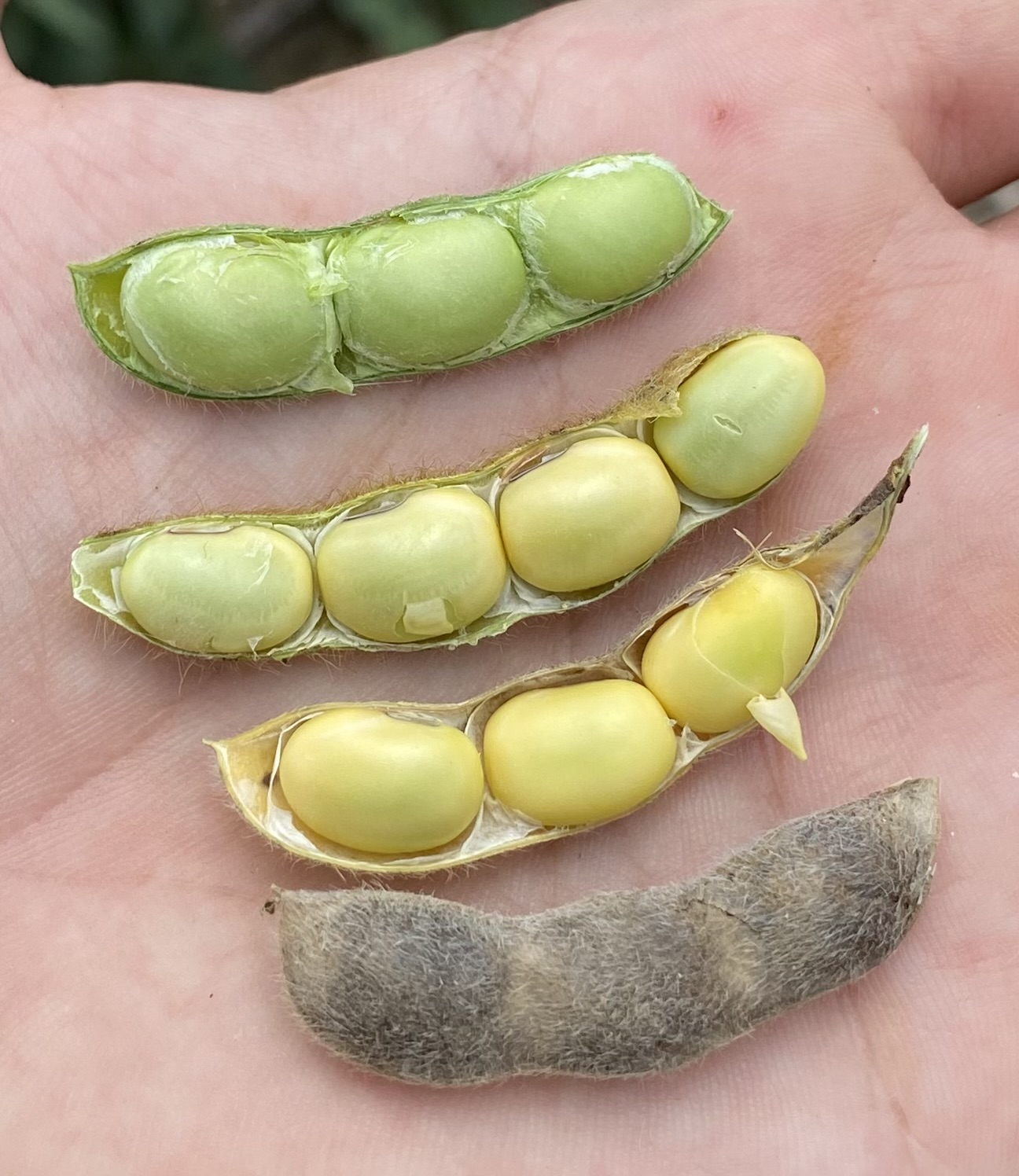Several questions have come in this week regarding longer-term grain storage. Commodity prices for both corn and soy have prompted this question as producers look to 2025 futures. How long grain can be safely stored without a degradation in quality depends on several factors.
All posts by Jake McNeal, Extension Corn and Soybean Specialist
Soybean Seed Quality Following Hurricane Helene
I want to enter into this conversation with great humility and respect, as many of our neighbors and fellow Tennesseans have suffered great loss in the wake of Helene. As devastating as crop loss and seed damage can be, many have lost much more.
Nevertheless, as we have returned to soybean harvest following hurricane Helene, myself and producers alike are experiencing a severe decline in soybean seed quality. I have heard reports that elevators are rejecting some loads entirely, and of dockages as high as $2 bushel-1 for others. With average yields and commodity prices not where we’d like for them to be in 2024, this is definitely not the finish we were hoping for.
2024 Soybean Desiccation
As we move into the 3rd week of August, it’s time to consider your desiccation options for soybean. Application timing is the most important. Too early and we will lose yield. Too late, and we’ve missed the window.

R6
R6.5
R7
R8
Nitrogen loss potential in wet corn fields
From late April and throughout the month of May, many parts of Middle and West TN have received persistent rainfall that is well above the average for this period. These rains have produced persistently wet soil conditions and have coincided with sidedress N fertilizer application where most or all of the recommended N is applied. With this much rain, there is potential for N loss. Continue reading
Harvest Aid for Soybean
Soybean cultivar selection in the Mid-southern U.S. has shifted toward early maturing, indeterminate maturity group (MG) 4 varieties. This shift has increased the adoption of harvest aid application in these environments. Leaf retention and green stems and pods in earlier maturing, indeterminate varieties after physiological maturity can delay harvest. Application of harvest aids also assists in late-season weed control and may allow producers to achieve earlier crop delivery at an above-base premium. Continue reading
Time to submit entries: TN Soybean Yield Contest
The Tennessee Top Bean soybean yield contest sponsored by the TN Soybean Promotion board and coordinated by UT Extension is open for entries now until September 1st for the 2023 season. Continue reading
Irrigation Termination Decisions for Corn and Soybean
| As we approach the end of July, much of our corn and some of our soybean acres are in the latter portion of their respective reproductive growth stages. As we progress toward physiological maturity, lets revisit irrigation termination decisions for these two crops. |
Magnesium Deficiency in Corn and Soybean
| Week 4: Magnesium |
| In this installment in our series on nutrient deficiencies in corn and soybean, this week we take quick look at magnesium: symptomology, sources, and common causes. |

